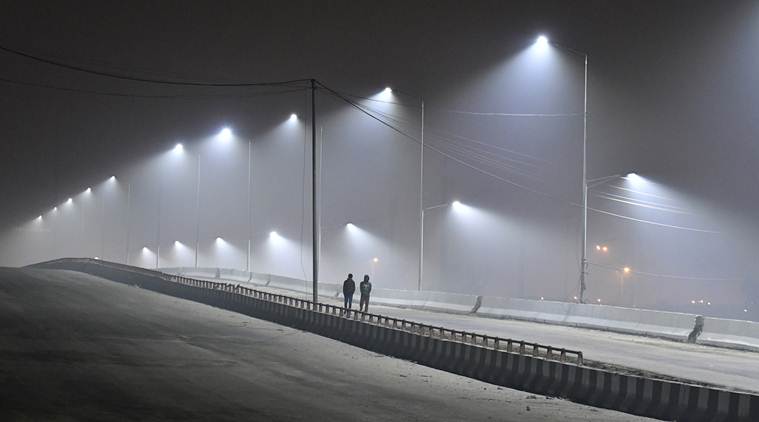Stay updated with the latest - Click here to follow us on Instagram
‘Tackling air pollution not possible with just household-level steps’
Mitigating sources such as biomass and kerosene used by Indian households would meet the annual air quality standard of 40 micrograms per cubic metre air, the report published Monday by journal PNAS said.
 Pedestrians walk along a road shrouded in smog (Express Photo: Anindito Mukherjee/Bloomberg)
Pedestrians walk along a road shrouded in smog (Express Photo: Anindito Mukherjee/Bloomberg)
National Ambient Air Quality standard can largely be achieved across India by controlling household emissions, but not in Delhi-NCR and some northwestern districts due to large-scale pollution from industries, vehicles and burning of waste, a recent report has said.
Mitigating sources such as biomass and kerosene used by Indian households would meet the annual air quality standard of 40 micrograms per cubic metre air, the report published Monday by journal PNAS said.
Exposure to ambient and household fine particulate matter is reportedly the single largest cause of premature mortality in India. People in Delhi-NCR were three times more exposed to fine particulate matter, said Sagnik Dey (42), one of the academics who authored the study.
Several studies in Delhi have found that a higher quantum of pollutants are released from vehicular pollution, incomplete combustion of fossil fuels, construction dust and fly ash from thermal power plants. Measures to control pollution from household sources might not be enough as the city is 100% kerosene free and over 90% of residents use LPG for cooking. Coal is used in cooking (tandoor) in 9,000 restaurants in city.
“The research puts a focus on household emissions… In Delhi, very few people are using household fuels and there are more outdoor activities,” he said.
Dey added that efforts to mitigate use of biomass and kerosene need to be made at grassroot and local government levels. He also said there should be mechanisms in place to monitor usage of LPG connections provided under various government policies.







